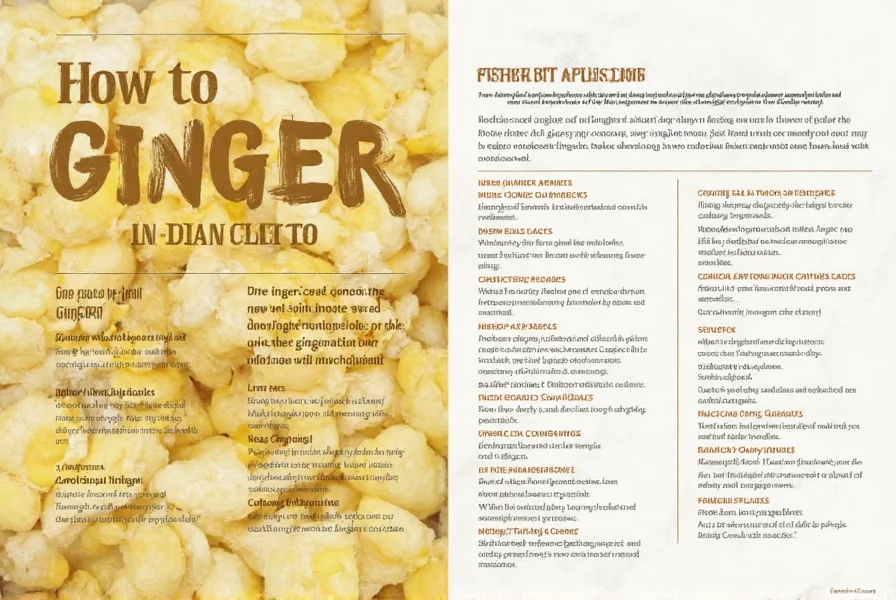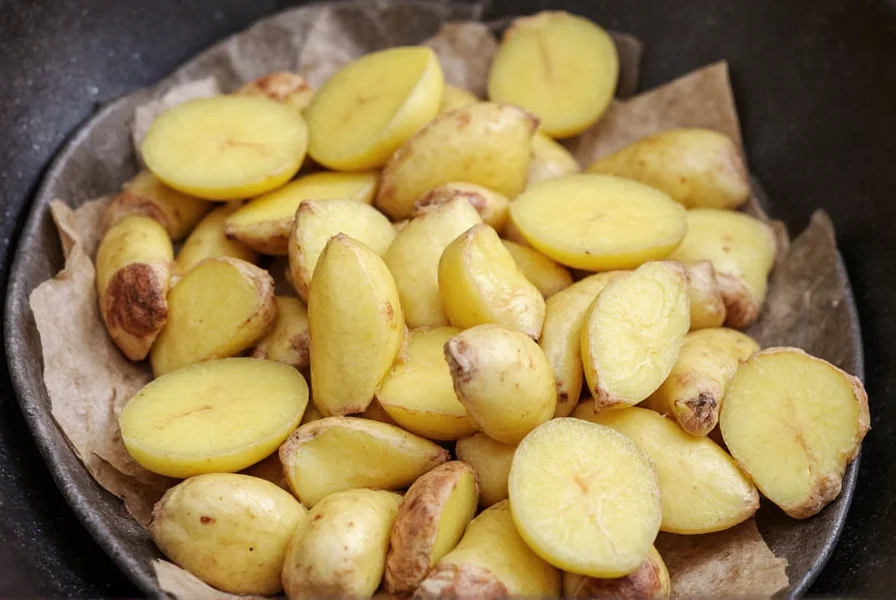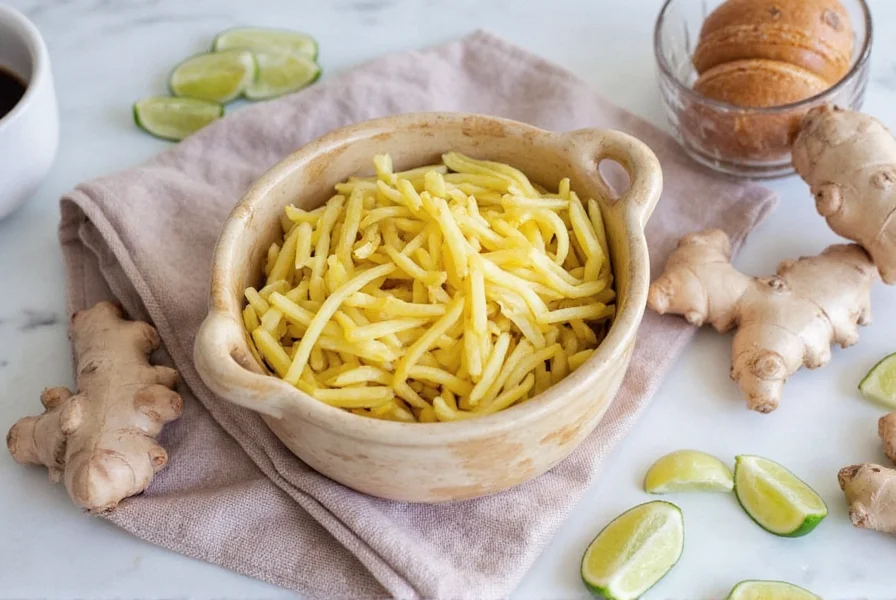Understanding how to properly cook ginger transforms this pungent root from a simple ingredient into a culinary powerhouse. Whether you're making Asian stir-fries, soothing teas, or baked goods, the preparation and cooking method significantly impacts both flavor and nutritional value. This comprehensive guide covers everything you need to know about cooking ginger effectively for various culinary applications.
Preparing Ginger for Cooking
Before you start cooking ginger, proper preparation is essential. The fibrous skin of ginger contains dirt and can be tough to digest, so removing it properly matters. The most efficient method for how to prepare ginger for cooking involves using the edge of a spoon rather than a peeler. The spoon's curvature follows the ginger's natural shape, minimizing waste while removing all the skin.
After peeling, decide on your cutting technique based on your recipe needs:
- Thin slices work well for teas and broths
- Julienne cuts are ideal for stir-fries
- Minced ginger distributes flavor evenly in sauces
- Ginger paste provides intense flavor in curries
| Preparation Method | Best For | Storage Duration |
|---|---|---|
| Whole peeled root | Long-term storage | 3 weeks in fridge |
| Sliced | Teas and broths | 1 week in fridge |
| Minced | Stir-fries and sauces | 5 days in fridge |
| Ginger paste | Curries and marinades | 1 month frozen |
Essential Cooking Methods for Ginger
The best way to cook fresh ginger depends on your intended dish and desired flavor profile. Each technique extracts different flavor compounds and creates unique culinary experiences.
Sautéing Ginger
Sautéing is the most common technique for methods for cooking ginger root in savory dishes. Heat 1-2 teaspoons of neutral oil in a pan over medium heat. Add your prepared ginger and cook for 1-2 minutes until fragrant but not browned. This method:
- Releases volatile oils that create aromatic compounds
- Mellows the sharpness while preserving flavor
- Creates the flavor base for countless Asian dishes
Professional chefs recommend adding ginger to the pan before other aromatics like garlic, as it takes slightly longer to develop its flavor.

Simmering and Boiling
For boiling ginger for tea or incorporating into soups and broths, simmering is ideal. Add sliced ginger to your liquid and bring to a gentle simmer for 10-15 minutes. Longer cooking times (20-30 minutes) extract more of ginger's beneficial compounds but result in a more intense flavor.
When making ginger tea specifically:
- Peel and thinly slice 1-2 inches of ginger
- Add to 2 cups of water
- Bring to a boil, then reduce to simmer for 15 minutes
- Strain and add honey or lemon to taste
Roasting Ginger
Roasted ginger recipes offer a completely different flavor profile. Whole or sliced ginger roasted at 375°F (190°C) for 20-25 minutes develops caramelized sugars and a milder, sweeter taste. This method works particularly well for:
- Ginger-infused oils
- Sweet applications like ginger cookies
- Dishes where you want subtle ginger flavor
Culinary Applications of Cooked Ginger
Knowing how to use cooked ginger in dishes elevates your cooking from basic to exceptional. Different cooking techniques serve specific culinary purposes:
Asian Cuisine Foundation
In Chinese, Japanese, and Korean cooking, sautéed ginger forms the aromatic base alongside garlic and scallions. This combination, known as the "holy trinity" of Asian cooking, appears in countless stir-fries, noodle dishes, and sauces. For authentic results, cook the ginger first, followed by garlic 30 seconds later to prevent burning.
Medicinal Teas and Tonics
Cooked ginger shines in wellness beverages. Simmered ginger tea with lemon and honey provides relief for sore throats and nausea. For maximum health benefits, add the ginger to cold water and gradually bring to a boil rather than adding to already boiling water.
Baking and Desserts
Cooked ginger brings warmth to baked goods. Crystallized ginger (simmered in sugar syrup then coated in sugar) adds chewy texture to cookies and cakes. Roasted ginger puree can replace some fat in muffins and quick breads while adding distinctive flavor.

Common Mistakes to Avoid
Even experienced cooks make these errors when preparing ginger:
- Overcooking - Ginger becomes bitter when cooked too long at high temperatures
- Burning - Ginger burns easily; always use medium or medium-low heat
- Improper storage - Fresh ginger should be stored in the refrigerator, not on the counter
- Using old ginger - Fresh ginger should be firm with smooth skin, not shriveled or moldy
Storing Cooked Ginger
Proper storage extends the usability of cooked ginger:
- Refrigerate cooked ginger in an airtight container for up to 1 week
- Freeze ginger slices or paste in ice cube trays for longer storage
- Dry cooked ginger in a low oven (170°F/75°C) for 6-8 hours to make ginger powder
Frequently Asked Questions
Can you eat ginger raw or does it always need cooking?
Yes, ginger can be eaten raw and is commonly used this way in many dishes like salads and sushi. Raw ginger has a sharper, more pungent flavor than cooked ginger. Cooking mellows the spiciness and develops sweeter notes, making it more versatile in various dishes. For medicinal purposes, raw ginger contains higher levels of gingerol, while cooked ginger has more of the compound zingerone which has different health benefits.
How long should ginger be cooked for different applications?
Cooking time varies by application: sautéing requires 1-2 minutes until fragrant; simmering for teas or broths needs 10-15 minutes for standard strength or 20-30 minutes for stronger flavor; roasting takes 20-25 minutes at 375°F (190°C). Overcooking ginger (beyond 30 minutes of simmering or 30+ minutes roasting) can make it bitter, so timing matters for optimal flavor.
Does cooking ginger reduce its health benefits?
Cooking transforms but doesn't eliminate ginger's health benefits. Raw ginger contains more gingerol (the compound responsible for its spicy heat), while cooking converts some gingerol to zingerone and shogaols, which have different but still beneficial properties. Simmered ginger tea retains significant anti-inflammatory and digestive benefits. For maximum medicinal value in teas, simmer rather than boil vigorously, and include the ginger pieces in your drink rather than straining them out completely.
What's the difference between young and mature ginger for cooking?
Young ginger (spring ginger) has thinner skin, higher moisture content, and a milder, juicier texture that's excellent for pickling or using raw. Mature ginger (winter ginger) has thicker skin, firmer flesh, and a more intense flavor that stands up better to cooking. For most cooked applications like stir-fries, soups, and roasting, mature ginger works best as it holds its structure and delivers stronger flavor. Young ginger is preferable for candying or making ginger syrup.
How can I prevent ginger from burning when cooking?
To prevent burning, always use medium or medium-low heat when cooking ginger. Add ginger to preheated oil rather than cold oil, and stir frequently. For sautéing, add 1-2 teaspoons of water or broth to the pan after the ginger has cooked for 30 seconds to create steam that helps cook it without burning. Never leave ginger unattended in a hot pan, as it can go from perfectly cooked to burnt in seconds. If cooking with other aromatics, add ginger first since it takes slightly longer to develop flavor than garlic.











 浙公网安备
33010002000092号
浙公网安备
33010002000092号 浙B2-20120091-4
浙B2-20120091-4